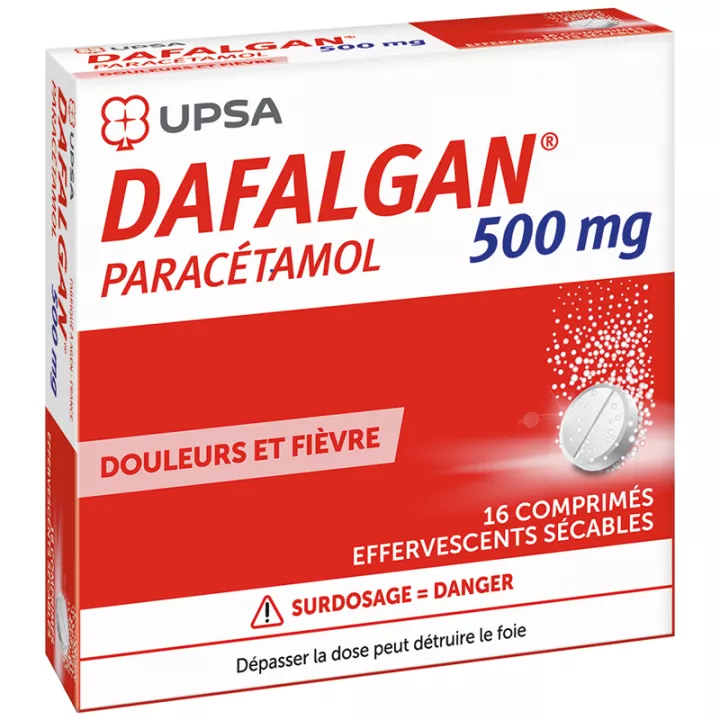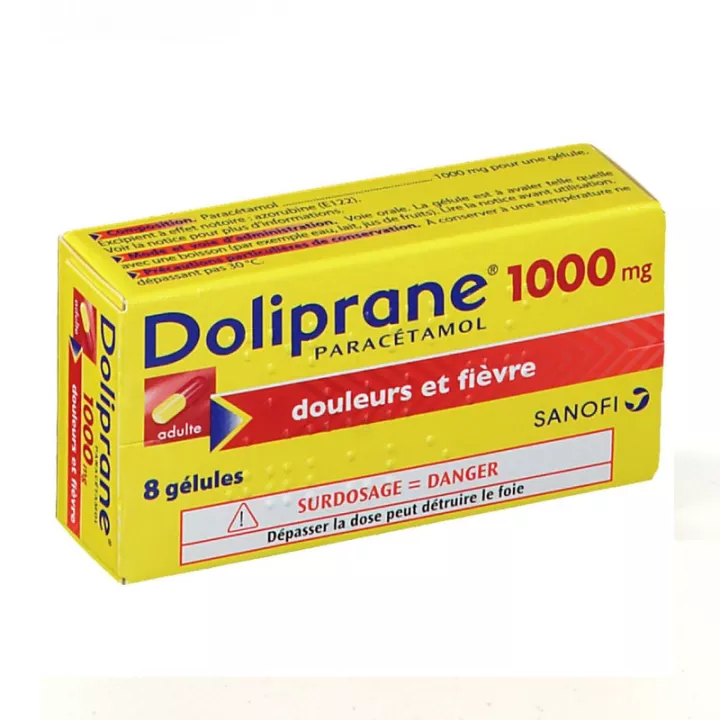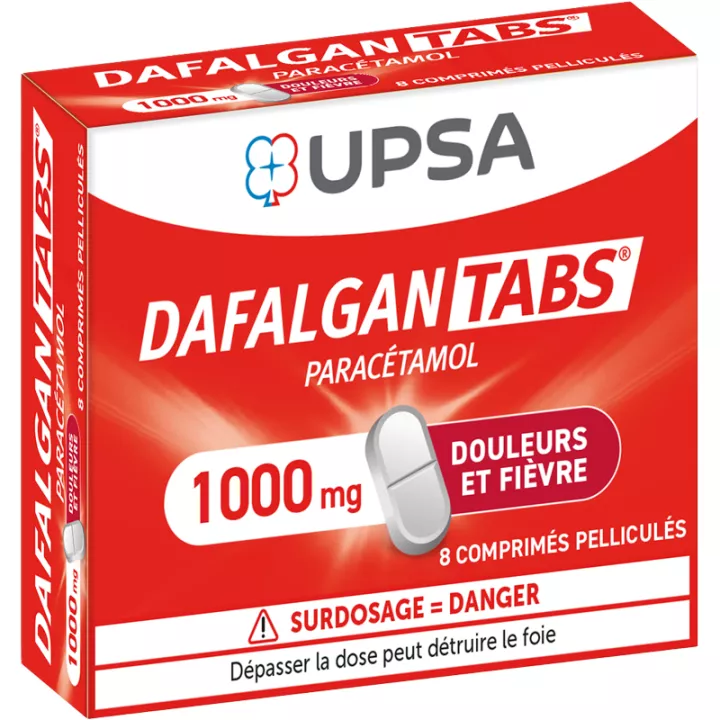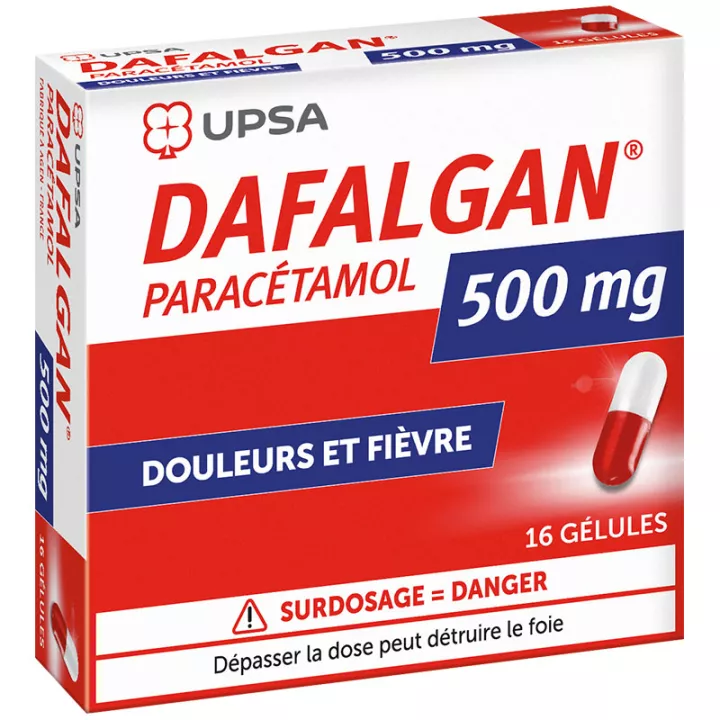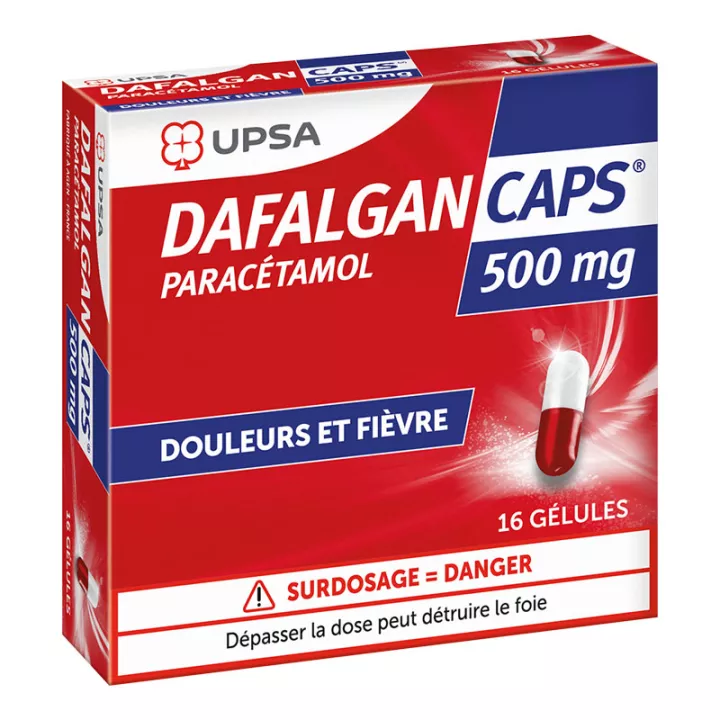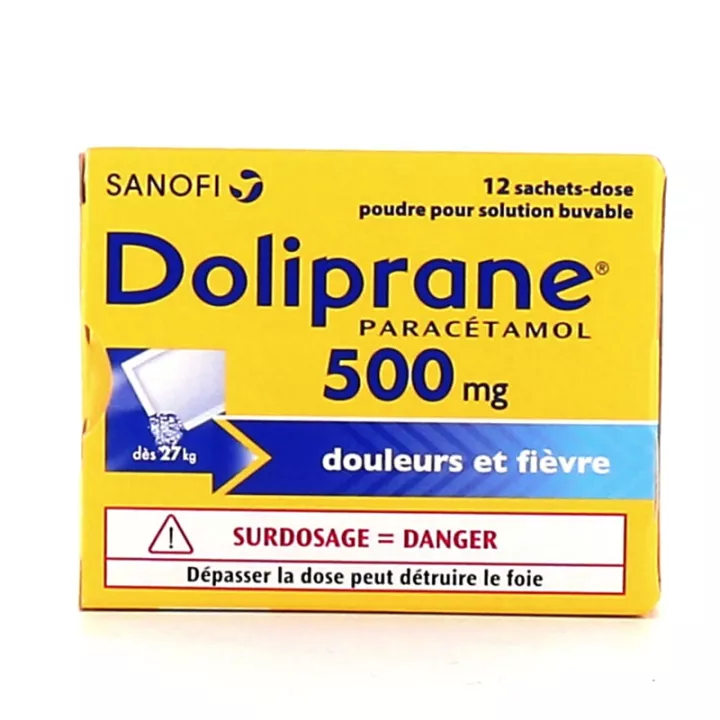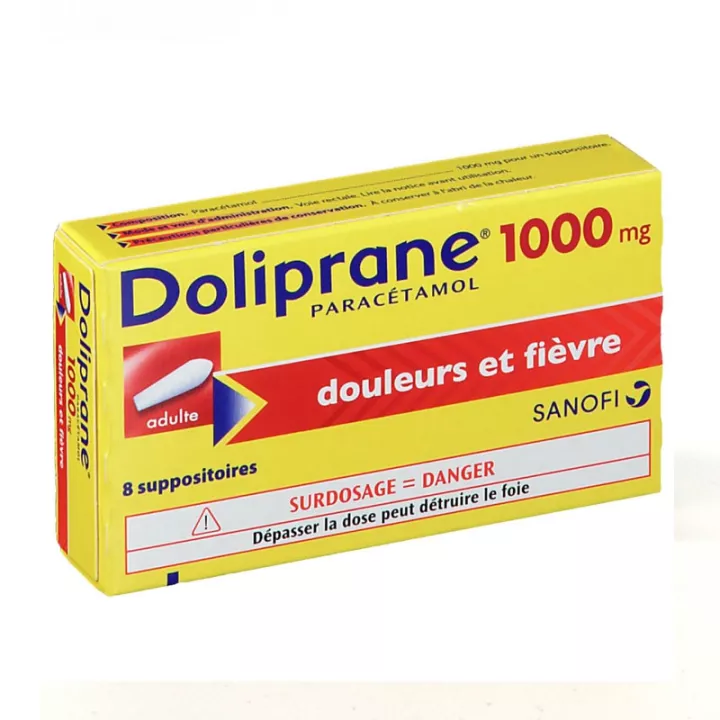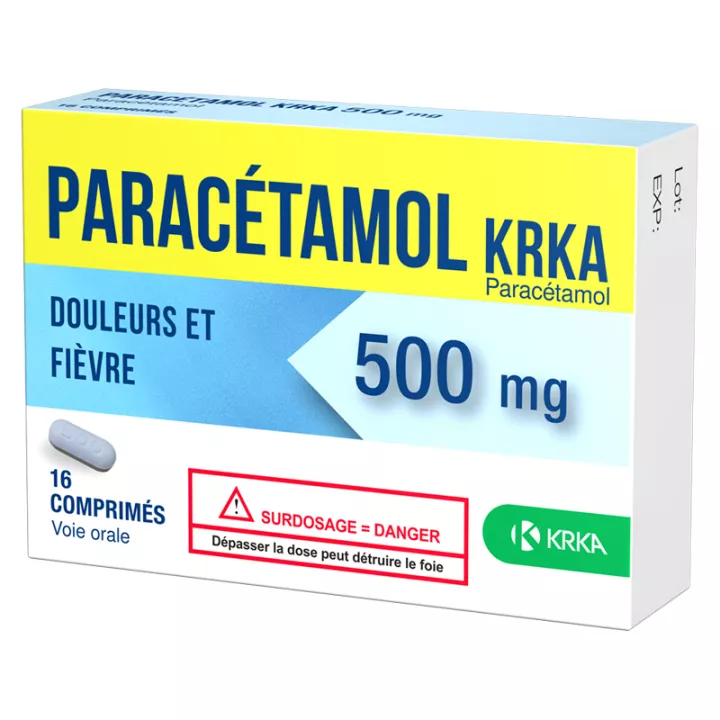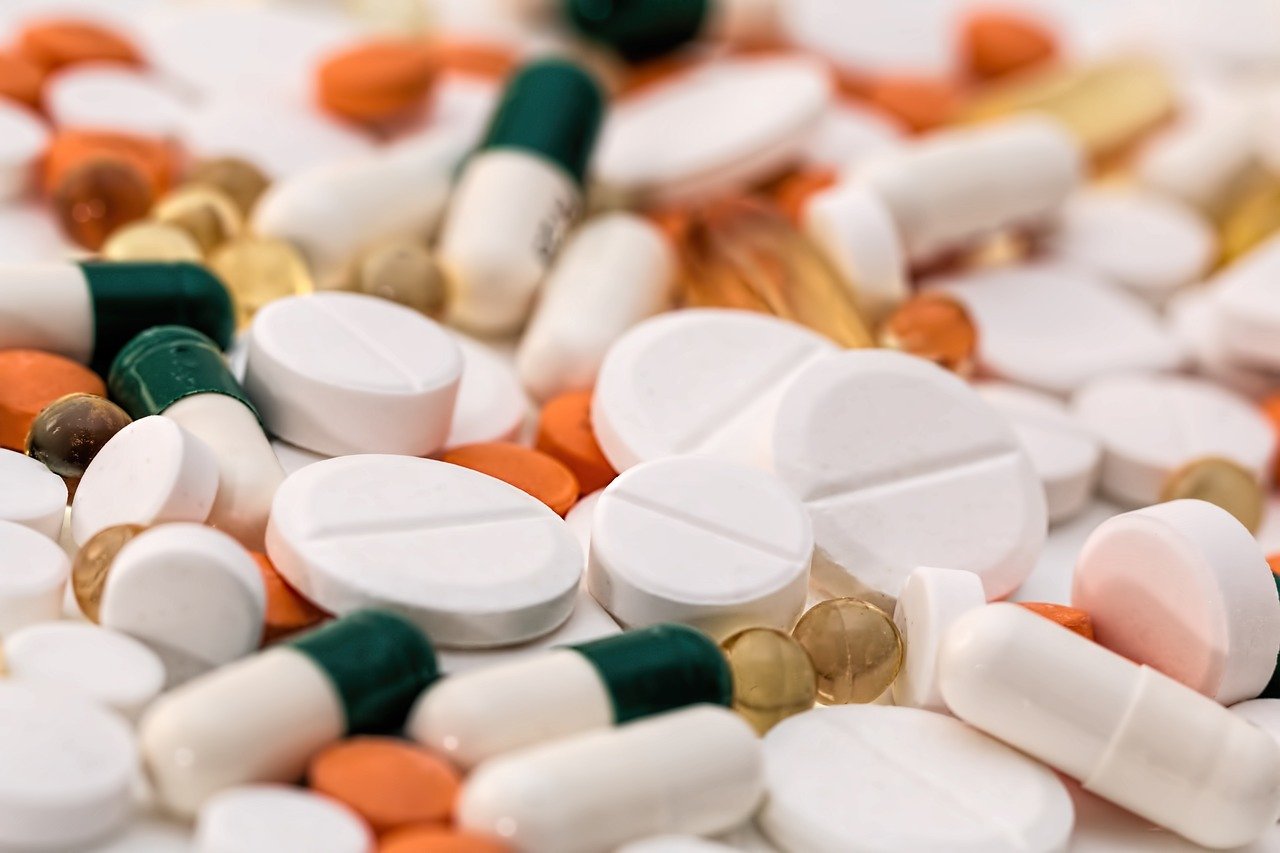NOTICE
ANSM - Updated: 31/03/2015
Description of the Medicine
DAFALGAN 500 mg, sparkling effervescent tablet
© framed
Read this leaflet carefully before taking this medication. It contains important information for your treatment.
If you have any further questions, ask your doctor or pharmacist for more information.
AT· Keep this leaflet, you may need to read it again.
AT· If you need more information and advice, ask your pharmacist.
If symptoms worsen or persist, consult a physician.
Review summary
In this notice :
1. WHAT IS DAFALGAN 500 Mg SERIOUS SPHERESCENT AND IN WHAT CASES IS IT USED?
2. BEFORE YOU TAKE DAFALGAN 500 Mg, Sterilizable Sterile Tablet?
3. HOW TO TAKE DAFALGAN 500 Mg Sterilized Sparkle Tablet?
4. WHAT ARE POSSIBLE SIDE EFFECTS?
5. HOW TO STORE DAFALGAN 500 Mg, Sterilized Sparkling Tablet?
6. ADDITIONAL INFORMATION
1. WHAT IS DAFALGAN 500 Mg SERIOUS SPHERESCENT AND IN WHAT CASES IS IT USED?
Pharmacotherapeutic group
OTHER ANTALGES AND ANTIPYRETICS
Therapeutic Indications
This medicine contains paracetamol.
It is indicated for pain and / or fever such as headaches, flu-like conditions, dental pain, aching, painful rulers.
This presentation is reserved for adults and children from 13 kg (from about 2 years): read carefully section 4.a) Posology .
For children of different weights, there are other paracetamol prescriptions: ask your doctor or pharmacist for advice.
2. BEFORE YOU TAKE DAFALGAN 500 Mg, Sterilizable Sterile Tablet?
List of information needed before taking the medication
Cons-indications
This medication MUST NOT BE USED in the following cases:
AT· allergy known to paracetamol or other constituents,
AT· severe liver disease.
IN CASE OF DOUBT, IT IS ESSENTIAL TO ASK FOR THE OPINION OF YOUR DOCTOR OR YOUR PHARMACIST.
Employment Precautions; special warnings
Special warnings
In case of overdose or mistake of a dose too high, consult your doctor immediately.
|
This medicine contains paracetamol. Other medicines contain it. Do not combine them, so as not to exceed the recommended daily dose ( see section on dosage ).
|
Employment Precautions
AT· If pain persists more than 5 days or fever more than 3 days , or in case of insufficient efficacy or any other signs, do not continue treatment without the advice of your doctor.
AT· In case of severe liver or kidney disease, it is necessary to consult your doctor before taking paracetamol.
AT· In case of diet without salt or low in salt, take into account in the daily ration of the presence of sodium: 412,4 mg per tablet.
IN CASE OF DOUBT DO NOT HESITATE TO ASK FOR THE OPINION OF YOUR DOCTOR OR YOUR PHARMACIST.
Interactions with other medicines
Report that you are taking this medication if your doctor prescribes a dosage of uric acid in your blood.
IN ORDER TO AVOID INTERACTIONS BETWEEN SEVERAL MEDICINAL PRODUCTS, YOU MUST SIGNAL SYSTEMATICALLY ANY OTHER TREATMENT IN PROGRESS TO YOUR DOCTOR OR YOUR PHARMACIST.
Interactions with food and beverages
Interactions with phytotherapeutic products or alternative therapies
Use during pregnancy and lactation
Pregnancy - Breastfeeding
Paracetamol, under normal conditions of use, may be used during pregnancy and during breast-feeding.
GENERALLY, DURING PREGNANCY AND BREASTFEEDING, ALWAYS ASK FOR THE OPINION OF YOUR DOCTOR OR YOUR PHARMACIST BEFORE USING A MEDICINE.
Sport
Effects on ability to drive or use machines
List of excipients with known effect
Sodium: 412.4 mg per tablet.
Benzoic acid (benzoates).
3. HOW TO TAKE DAFALGAN 500 Mg Sterilized Sparkle Tablet?
Instructions for proper use
Dosage, Mode and / or Route (s) of Administration, Administration Frequency and Duration of Treatment
Dosage
This presentation is reserved for adults and children from 13 kg (approximately from 2 years).
The dosage of paracetamol depends on the weight of the child; the ages are mentioned for information purposes.
If you do not know the child's weight, weigh it in order to give it the most suitable dose.
Paracetamol is available in many dosages, allowing the treatment to be adapted to the weight of each child.
The recommended daily dose of paracetamol is dependent on the child's weight: it is approximately 60 mg / kg / day, withdrawn in 4 or 6 doses, ie approximately 15 mg / kg 6 hours or 10 mg / kg every 4 hours.
For children weighing 13 to 20 kg (about 2 to 7 years), the dosage is 1/2 tablet per dose, to be renewed if necessary after 6 hours, without exceeding 4 half tablets per dose. day.
For children weighing 21 to 25 kg (about 6 to 10 years), the dosage is 1/2 tablet per dose, to be renewed if necessary after 4 hours, without exceeding 6 half-tablets per dose. day .
For children weighing 26 to 40 kg (approximately 8 to 13 years), the dosage is 1 tablet per dose, to be renewed if necessary after 6 hours, without exceeding 4 tablets per day.
For children weighing 41 to 50 kg (approximately 12 to 15 years), the dosage is 1 tablet per dose, to be renewed if necessary after 4 hours, without exceeding 6 tablets per day.
AT· For adults and children weighing more than 50 kg (from about 15 years), the usual dosage is 1 to 2 tablets at 500 mg per dose depending on the intensity of the pain , To be renewed in case of need after 4 hours minimum.
It is usually not necessary to exceed 3 g of paracetamol per day, or 6 tablets per day.
However, in case of more intense pain, and on the advice of your doctor, the total dose can be increased up to 4 g per day, or 8 tablets per day.
AT· However:
o doses greater than 3 g of paracetamol per day require a medical opinion.
o NEVER TAKE MORE THAN 4 GRAMS OF PARACETAMOL PER DAY (taking all medicines containing paracetamol into their formula).
Always respect an interval of at least 4 hours between the catches.
In case of severe kidney disease (severe renal failure), the dose should be 8 hours apart and the total dose should not exceed 6 tablets per day (3 g).
IN CASE OF DOUBT, ASK FOR ADVICE TO YOUR DOCTOR OR YOUR PHARMACIST.
Method and route of administration
Oral use.
Allow the tablet to dissolve completely in a glass of water, if necessary after breaking it in half.
In addition, if your child has a fever greater than 38.5Â ° C, you can improve the efficacy of the medication by:
AT· discover your child,
AT· make the drink,
AT· do not leave your child in a place too hot.
Frequency and Timing at which the Medication is to be Administered
Systematic jacks prevent the oscillations of pain or fever.
In children, they should be kept at regular intervals, including at night, preferably 6 hours , and at least 4 hours.
In adults, they must be spaced at least 4 hours apart.
In case of severe kidney disease (severe kidney failure), the catch will be spaced at least 8 hours apart.
Symptoms and Instructions for Overdose
In case of overdose or accidental poisoning, seek emergency medical attention.
Instructions for omission of one or more doses
Risk of withdrawal syndrome
4. WHAT ARE POSSIBLE SIDE EFFECTS?
Description of undesirable effects
AS ANY ACTIVE PRODUCT, THIS MEDICINE MAY, IN CERTAIN PERSONS, INVOLVE MORE OR LESS GENERAL EFFECTS:
AT· In rare cases, it is possible that a rash or redness of the skin or an allergic reaction may occur, which can be manifested by a sudden swelling of the face and neck or by a sudden discomfort with fall of the aroused pressure rial. Immediately stop treatment , notify your doctor and never take any medicines containing paracetamol.
AT· Exceptionally, biological changes requiring blood check have been observed: abnormally low levels of certain white blood cells or blood cells such as platelets that can result in nosebleeds or gums. In this case, consult a physician.
REPORT TO YOUR DOCTOR OR YOUR PHARMACIST ANY EFFECT NOT DESIRED AND GENERATED WHICH IS NOT MENTIONED IN THIS NOTICE.
5. HOW TO STORE DAFALGAN 500 Mg, Sterilized Sparkling Tablet?
Keep out of the reach and sight of children.
Date of filing
Do not exceed the expiry date stated on the outer packaging
Storage conditions
This medication should be stored away from heat and moisture.
If necessary, warnings against some visible signs of deterioration
6. ADDITIONAL INFORMATION
Full list of active substances and excipients
Paracetamol ............................................... .................................................. ............................... 500.00 mg
For one tablet.
Anhydrous citric acid, anhydrous sodium carbonate, sodium bicarbonate, sorbitol, sodium saccharin, sodium docusate, povidone, sodium benzoate.
Pharmaceutical form and content
Sparkling sponge tablet
Box of 10; 16 tablets.
Name and address of the marketing authorization holder and the holder of the manufacturing authorization responsible for the release of the lots, if different
Holder
UPSA SAS
3 RUE JOSEPH MONIER
92500 RUEIL-MALMAISON
exploiting
UPSA SAS
3 RUE JOSEPH MONIER
92500 RUEIL-MALMAISON
Maker
BRISTOL MYERS SQUIBB
304, avenue du Docteur Jean Bru
47000 AGEN
or
BRISTOL MYERS SQUIBB
979, avenue des Pyrenees
47520 THE PASSAGE
Names of medicines in the Member States of the European Economic Area
Date of approval of the notice
The last day this notice was approved is {date}.
AMM under exceptional circumstances
Internet Information
Detailed information on this medicinal product can be found on the website of the Afssaps (France).
Information for Health Professionals
Other

